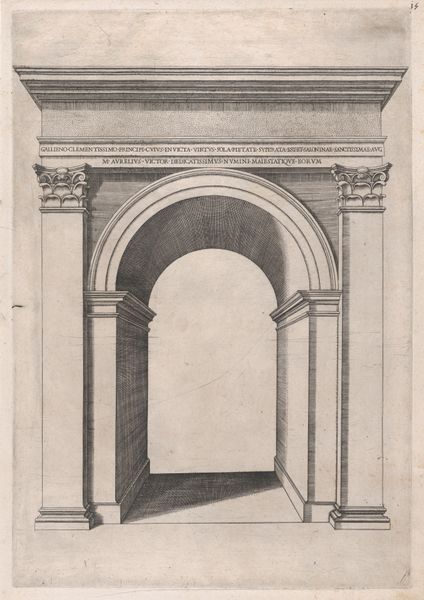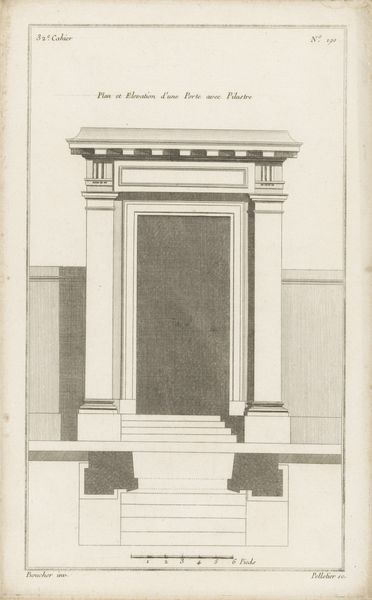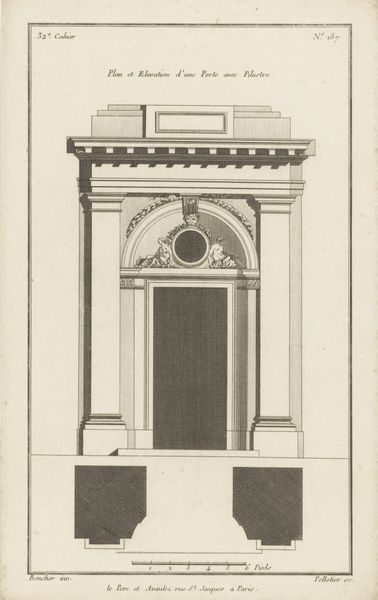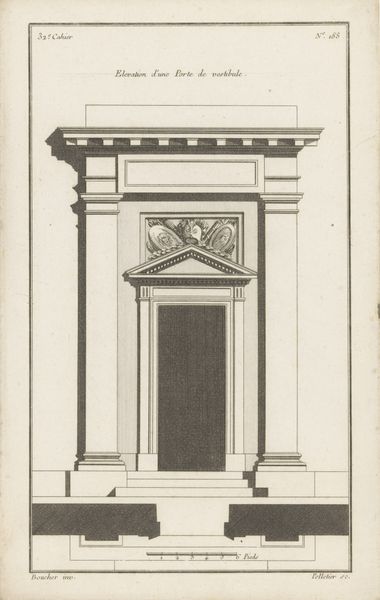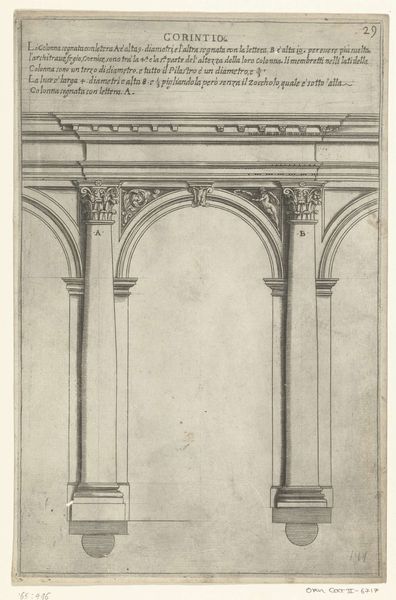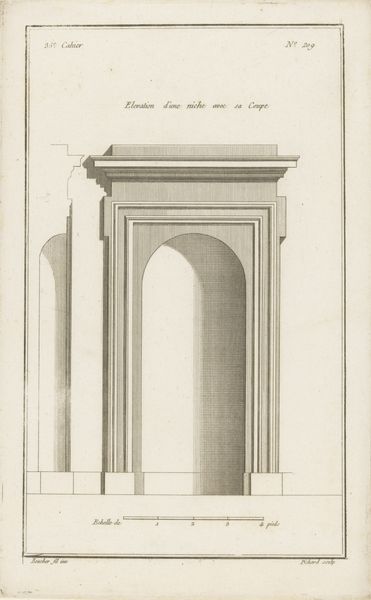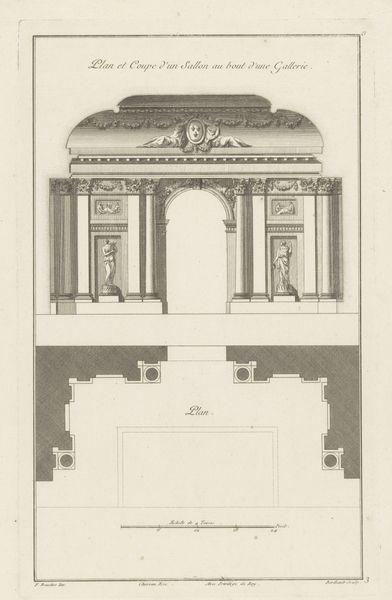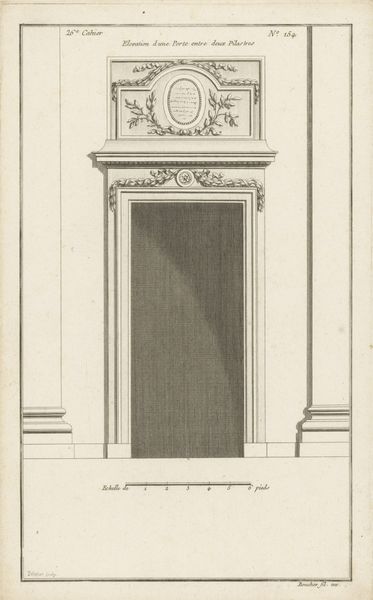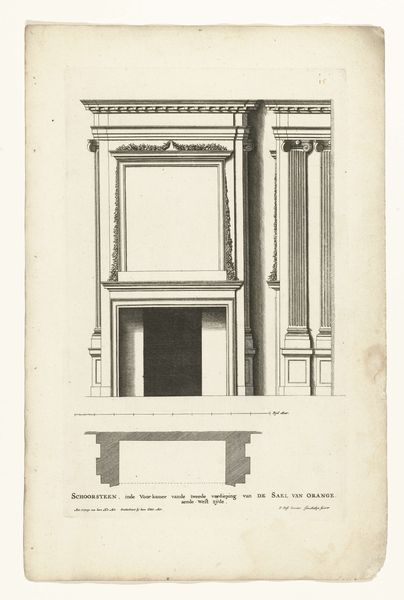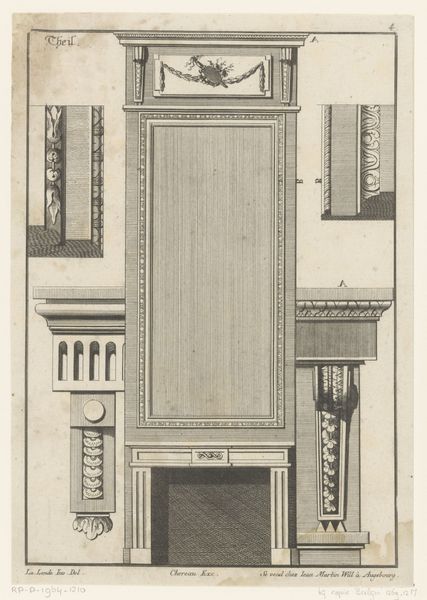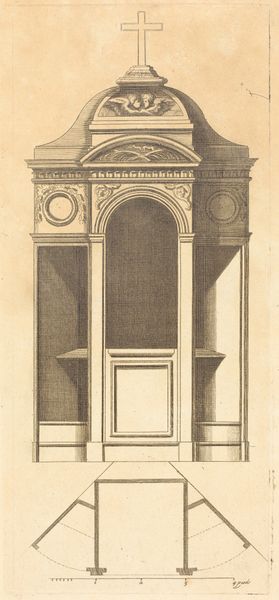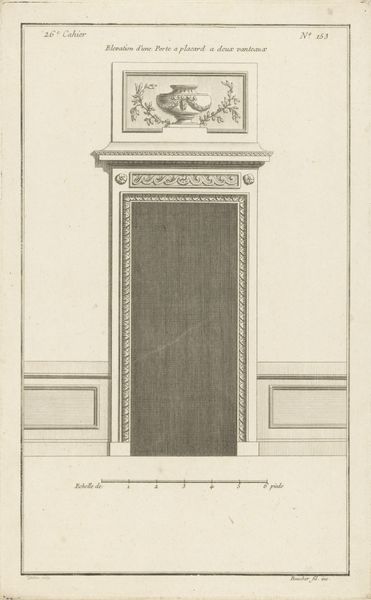
drawing, paper, ink, architecture
#
drawing
#
neoclacissism
#
paper
#
ink
#
geometric
#
column
#
architecture
Dimensions: height 329 mm, width 203 mm
Copyright: Rijks Museum: Open Domain
Editor: We’re looking at “Poort met zuilen,” or “Gateway with Columns,” a pen and ink drawing on paper by Jean Pelletier, dating from around 1772 to 1779. The precision is striking; it feels almost like a blueprint rather than a freehand drawing. What stands out to you about the composition? Curator: The beauty of this piece lies precisely in that tension, its dual nature. Pelletier presents an architectural form with an exacting level of detail. Note how the Corinthian capitals, meticulously rendered, command the composition with their elaborate ornamentation. What purpose do you believe is achieved by this blending of art and architecture? Editor: Well, it makes me think about Neoclassicism. It is like they are saying that classical ideals should be represented in all forms. Like they are all connected? Curator: Precisely. Semiotics are useful here. This is architectural drafting presented as an artistic exercise. Observe how the structural elements, from the arch to the columns, are all reduced to essential forms, inviting contemplation on pure geometry. The emphasis isn't necessarily about practicality, but idealization. What do you see as the significance of this aesthetic choice? Editor: So it's not just about drawing a building. The real focus is on the geometric beauty, and those idealized shapes. The technique draws your eye into considering shape as a starting point for what a building represents. Do you think the drawing's emphasis on form and structure influences its overall meaning or the way we understand architecture of the time? Curator: Absolutely. Think about the Enlightenment values and return to classical order at the time; Pelletier's precise lines embody the movement’s intellectual ideals of clarity and reason. The drawing invites the viewer to analyze the forms and their relationships. Is there a contrast here, in terms of its cultural significance? Editor: This drawing shows me how deeply interconnected art, architecture, and intellectual pursuits were during the Neoclassical period, which is pretty cool to think about. Curator: Indeed, it is an excellent example of form and idea united to create more than simply its surface depicts.
Comments
No comments
Be the first to comment and join the conversation on the ultimate creative platform.
